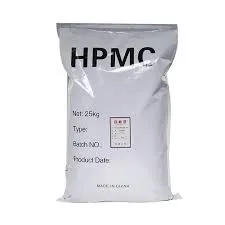
Dec . 19, 2024 03:04 Back to list
hpmc vs hec
HPMC vs. HEC A Comparative Analysis
In the realm of pharmaceutical and cosmetic formulations, the choice of excipients plays a critical role in ensuring product efficacy, stability, and user acceptance. Two commonly used excipients are Hydroxypropyl Methylcellulose (HPMC) and Hydroxyethyl cellulose (HEC). Both of these cellulose derivatives serve as thickening agents, stabilizers, and film-formers, yet they possess distinct properties that make them suitable for different applications. This article aims to compare HPMC and HEC based on their chemical structure, properties, applications, and advantages.
Chemical Structure
HPMC is a non-ionic synthetic polymer derived from cellulose. It is obtained by chemically modifying cellulose through the substitution of hydroxyl groups with hydroxypropyl and methyl groups. This modification leads to increased solubility in water and provides HPMC with a thixotropic property, allowing it to change viscosity under shear stress.
On the other hand, HEC is produced by the etherification of cellulose with ethylene oxide. Similar to HPMC, HEC is also non-ionic and is known for its excellent water retention and film-forming abilities. However, its modification primarily focuses on providing increased solubility compared to native cellulose, while retaining its thickening and stabilizing properties.
Properties
When comparing the two, one of the primary differences lies in their solubility. HPMC is soluble in both hot and cold water and forms a gel-like structure when hydrated, which becomes advantageous in applications requiring controlled release of active ingredients. HEC, while also soluble in water, does not exhibit the same gel-forming capability, making it more suitable for applications where a less viscous solution is required.
Another key difference is their viscosity profile. HPMC can provide a broader range of viscosities depending on the concentration and the ratio of its hydroxypropyl and methyl substitutions. This versatility allows formulators to fine-tune the viscosity of their products. In contrast, HEC has a more consistent viscosity profile, which can be beneficial for certain formulations requiring stability over time.
Applications
hpmc vs hec

The applications of HPMC and HEC span various industries, including pharmaceuticals, cosmetics, and food. HPMC is widely utilized in the pharmaceutical industry, particularly in the formulation of sustained-release tablets and as a binder in granulations. Its unique gelling property makes it ideal for controlled drug delivery systems, where slow dissolution rates are essential.
In cosmetics, HPMC’s ability to provide smooth textures and enhance the stability of emulsions makes it a preferred choice in products such as creams, lotions, and gels. It is also used in hair care products where a clear, non-greasy feel is desired.
HEC is predominantly found in personal care products, as it improves the flow and thickness of formulations. It is commonly used in shampoos, conditioners, and other hair and skin care products. Its water retention properties also make it beneficial in agricultural applications, such as soil conditioners.
Advantages
HPMC offers several advantages, including its biocompatibility and low toxicity, making it suitable for oral and topical formulations. Additionally, due to its ability to form films, it is often used in modified-release applications, providing a controlled release of active ingredients, which is vital in pharmaceutical formulations.
HEC, on the other hand, is valued for its excellent emulsification properties and its ability to impart a silky texture to formulations. Its high solubility in water allows for effective dispersion, which is particularly useful in gel and cream formulations where uniformity is crucial.
Conclusion
Ultimately, the choice between HPMC and HEC depends on the specific requirements of the formulation. While HPMC offers versatility and controlled release characteristics, HEC excels in providing texture and stability. Understanding the unique properties and applications of each can help formulators create more effective and desirable products across various industries. As the demand for more sophisticated formulations continues to rise, the role of these cellulose derivatives will remain integral in the development of innovative pharmaceutical and cosmetic products.
-
Versatile Hpmc Uses in Different Industries
NewsJun.19,2025
-
Redispersible Powder's Role in Enhancing Durability of Construction Products
NewsJun.19,2025
-
Hydroxyethyl Cellulose Applications Driving Green Industrial Processes
NewsJun.19,2025
-
Exploring Different Redispersible Polymer Powder
NewsJun.19,2025
-
Choosing the Right Mortar Bonding Agent
NewsJun.19,2025
-
Applications and Significance of China Hpmc in Modern Industries
NewsJun.19,2025







